In its most recent and troubling quarter, Apple indicated that despite losing ground in iPhone sales, including a significant sales slump in China, it believes its next big opportunity should kick in soon. And that big opportunity is India. But will India present the same opportunity Apple thinks it will?
Country Comparisons
India has a population almost the size of China (approximately 1.4B in China vs. 1.3B in India). China has done well for Apple over the past 2-3 years, bolstering sales in an otherwise saturated market in the mature economies. And India is relatively underrepresented in Smartphone penetration. Indeed, as a percentage of total devices, China currently has about 3 times as many smartphones in use as India does.
But although India is often seen as a “green field” opportunity in general, does it really represent the needed boost over the next couple of years that Apple thinks it will, especially given world macroeconomics that are signaling increased difficulty in emerging markets? Can India make up the slack?
Are There Indicators That Can Help?
In attempting to answer this question, we looked at several possible indicators. Although none are flawless, we decided to concentrate on two primary measurements: the comparable amount of household income in India as compared to China, and the amount of 4G cellular coverage available.
The first as an indicator of device consumption is fairly obvious. The more household income available, the more likely it is that households will spend on the higher end devices that Apple produces (as opposed to low end smart or feature phones that in some cases retail from less than $50). And to purchase Apple services that adds significantly to its bottom line.
The second indicator, 4G coverage, we considered a valid indicator because it’s unattractive to own a higher end smartphone if you can’t get fast networks to put it to good use. And the majority of advanced features, and especially the services that Apple sells along with the phone, just don’t cut it with inferior networks.
In the case of total household income, there is a large disparity between China and India. Although both countries have many well to do areas primarily in the cities, they also have a large population of rural poor. But China has made many more advances in upgrading its economy over the past decade than India has. As a result, China has nearly twice the median household income of India.
Do Household Incomes Make a Difference?
To compare the effect of household incomes, we calculated the number of devices deployed per median household income for both China and India. While not a perfect measure, it is a way to do an equalization of the potential across the two countries by equalizing the economics. We found that China has nearly two times the number of smartphones deployed per dollar of median family income as does India.
Or interpretation of the above indicates that Chinese families are willing to spend more of their discretionary income on smartphones than Indian families do, including potentially purchasing more than one device per household. Why is that? Partially it’s a values issue (smartphones seem to be more of a status symbol in China). But it may also be due to an infrastructure issue, which is the next indicator we’ll analyze.
How Does Cellular Infrastructure Effect Smartphone
Deployments?
There is a disparity between higher capability 4G/LTE networks in China vs. India. To assess if this has an impact, we looked at the availability of fast cellular networks that power the smartphones that people are purchasing.
While various estimates of China’s availability of 4G are fairly consistent, getting good estimates for India proved more difficult and varied widely. We used a figure we believe to be realistic. The comparison shows that China has nearly twice the 4G coverage of India.
For a more balanced comparison, we created an equalization factor for the difference in available coverage. We calculated the number of smartphones being deployed as a percentage of available 4G/LTE coverage. This is an attempt to equalize for the number of devices connected to faster networks, which would favor higher end devices. What we found was that China had nearly twice as many smartphones connected vs. India per percent of high speed network deployed.

Drawing Some Conclusions
So what does all this mean? Based on the above data, we expect that Apple (and higher end smartphones in general) will sell at significantly reduced numbers in India than they do in China. Despite India having fewer smartphones in use and therefore having more upside, it also has a lower level of network capability necessary for best use of higher end smartphones. And it has lower median household income making it more difficult for families to purchase a higher end device, or to buy multiple devices.
In most parts of the emerging world, Android has captured about 85%-90% of the smartphone market. That limits potential Indian sales for Apple even further even though its holds the vast majority of the remaining market share. A comparison of the factors we calculated above shows that the Indian market has significantly less sales volume potential than China in the short to medium term.
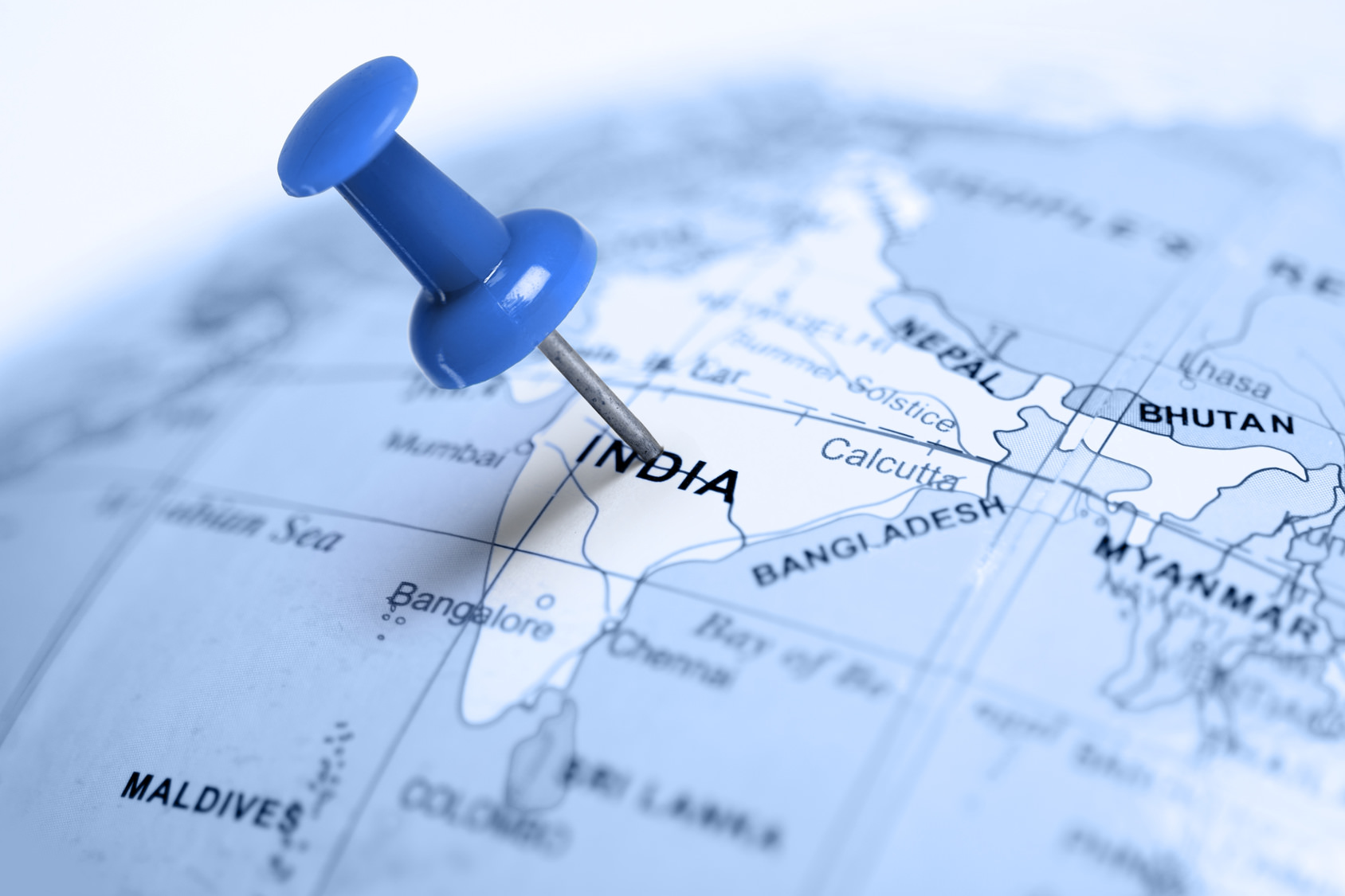
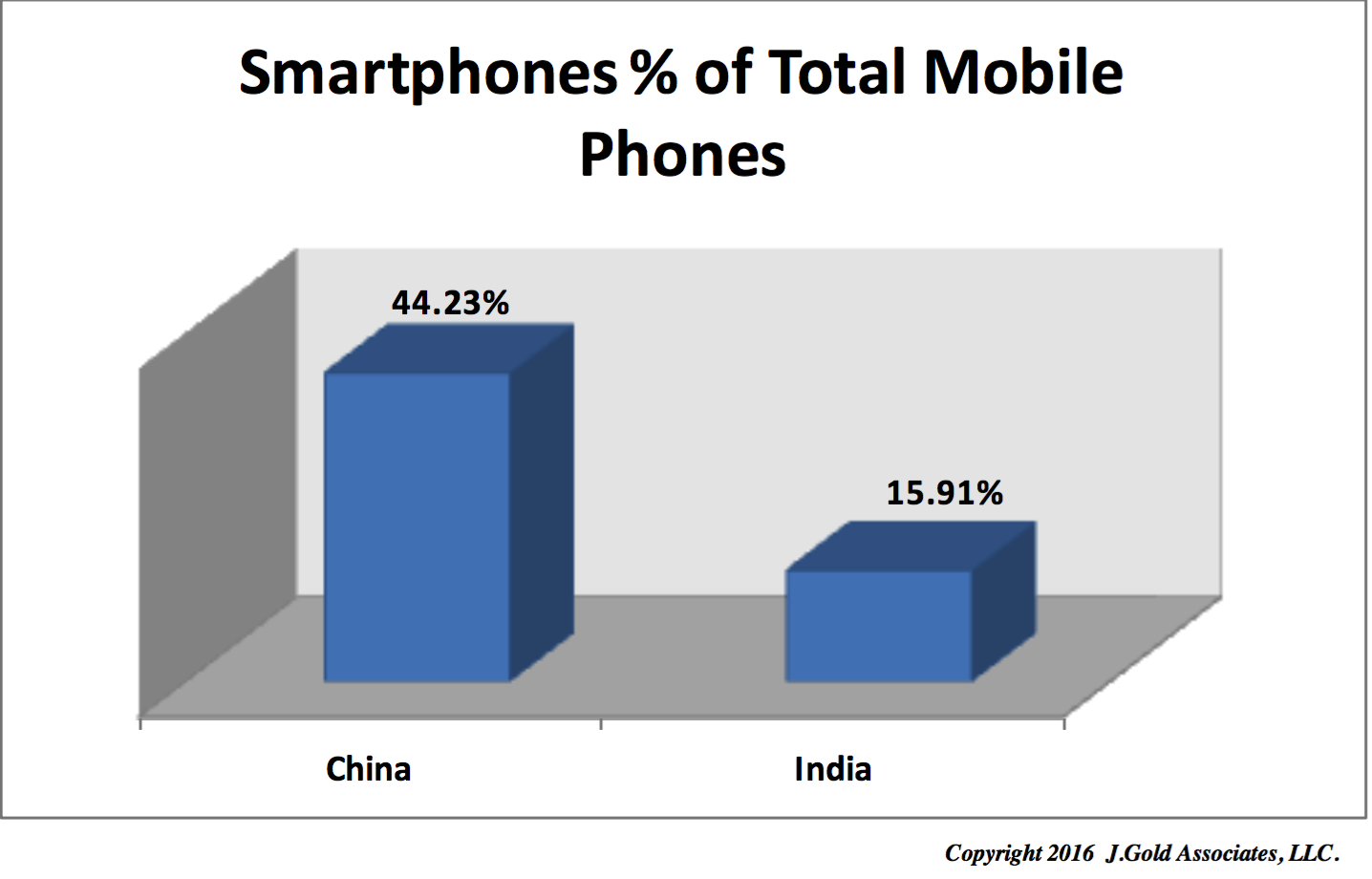
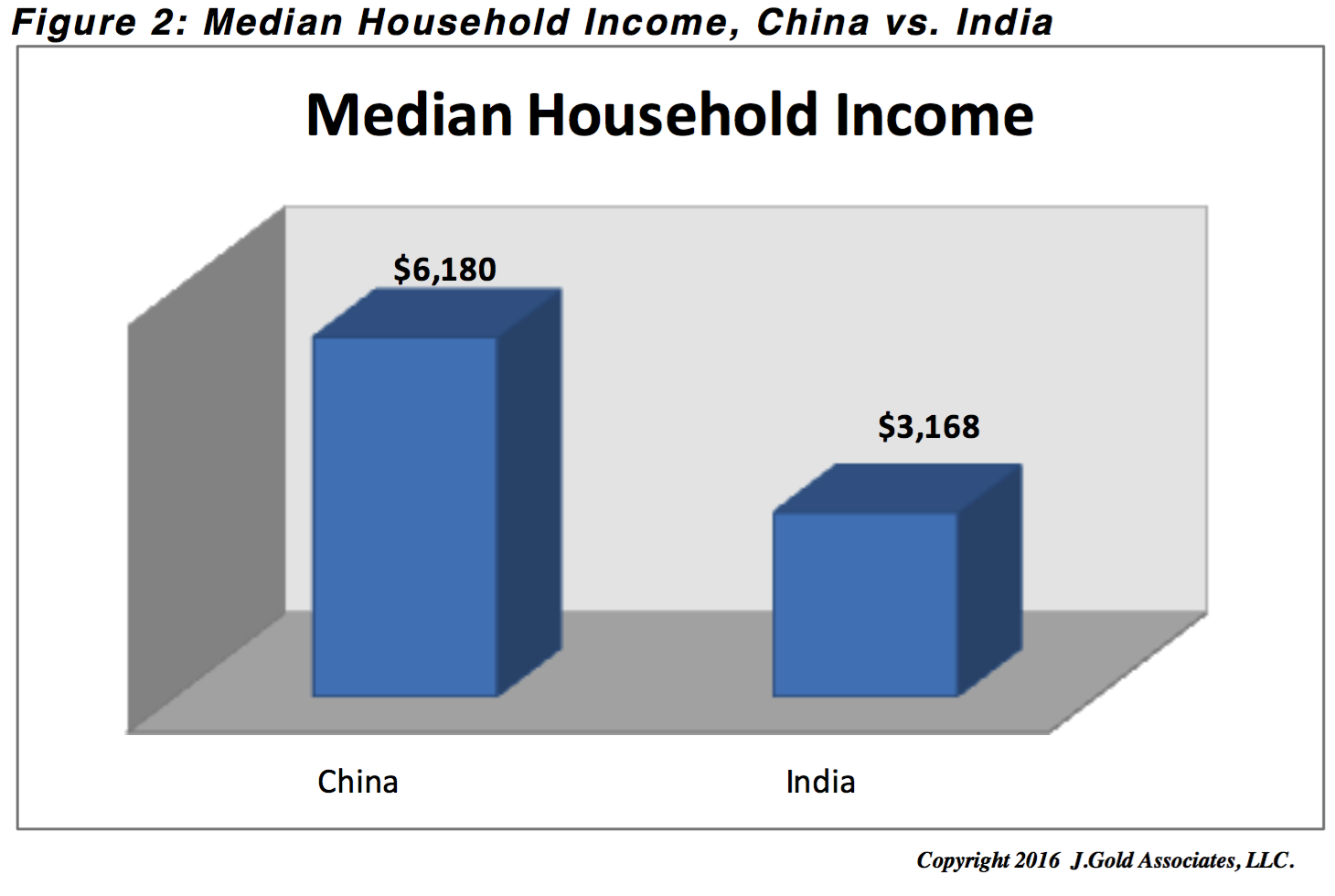
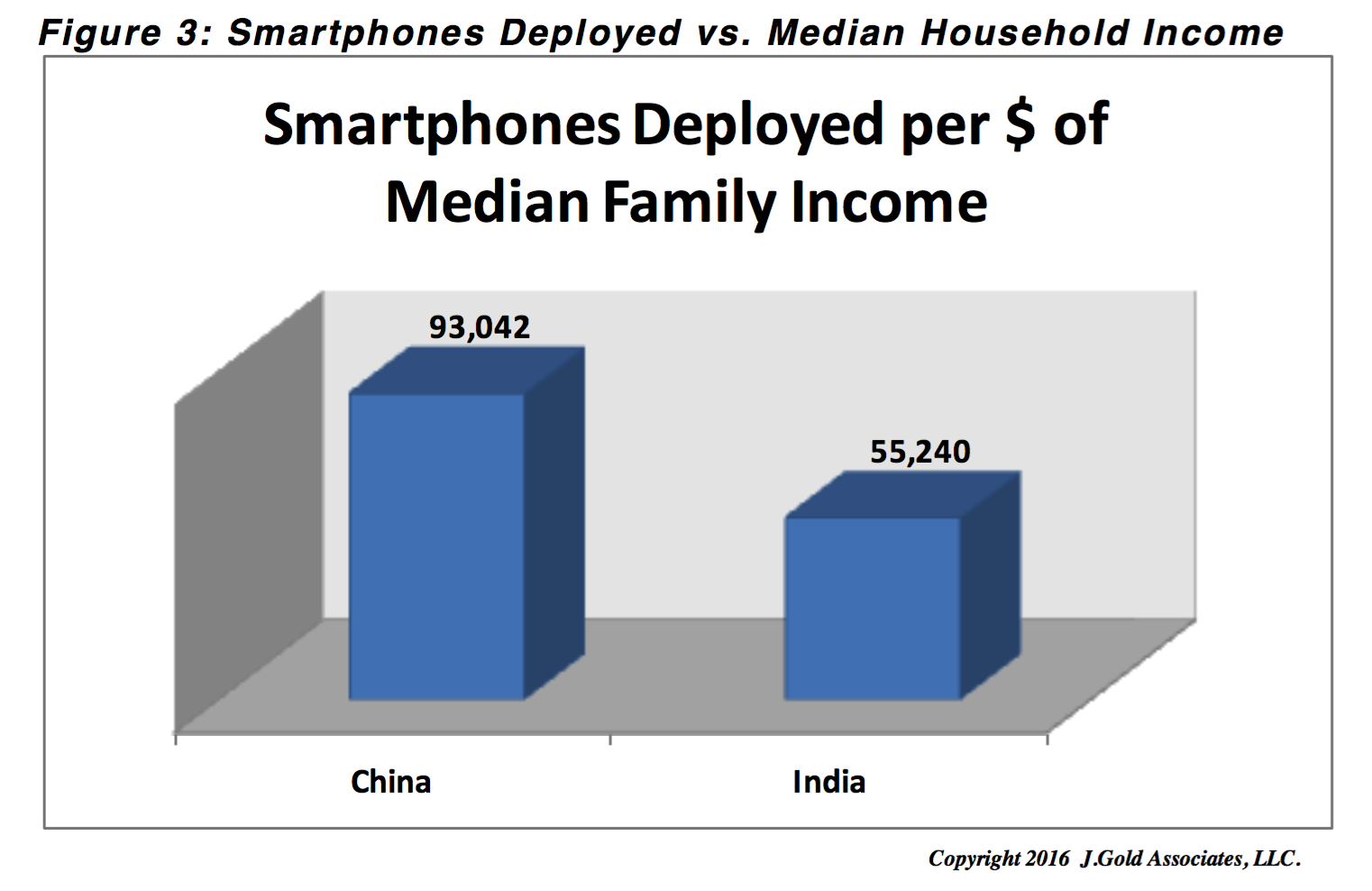
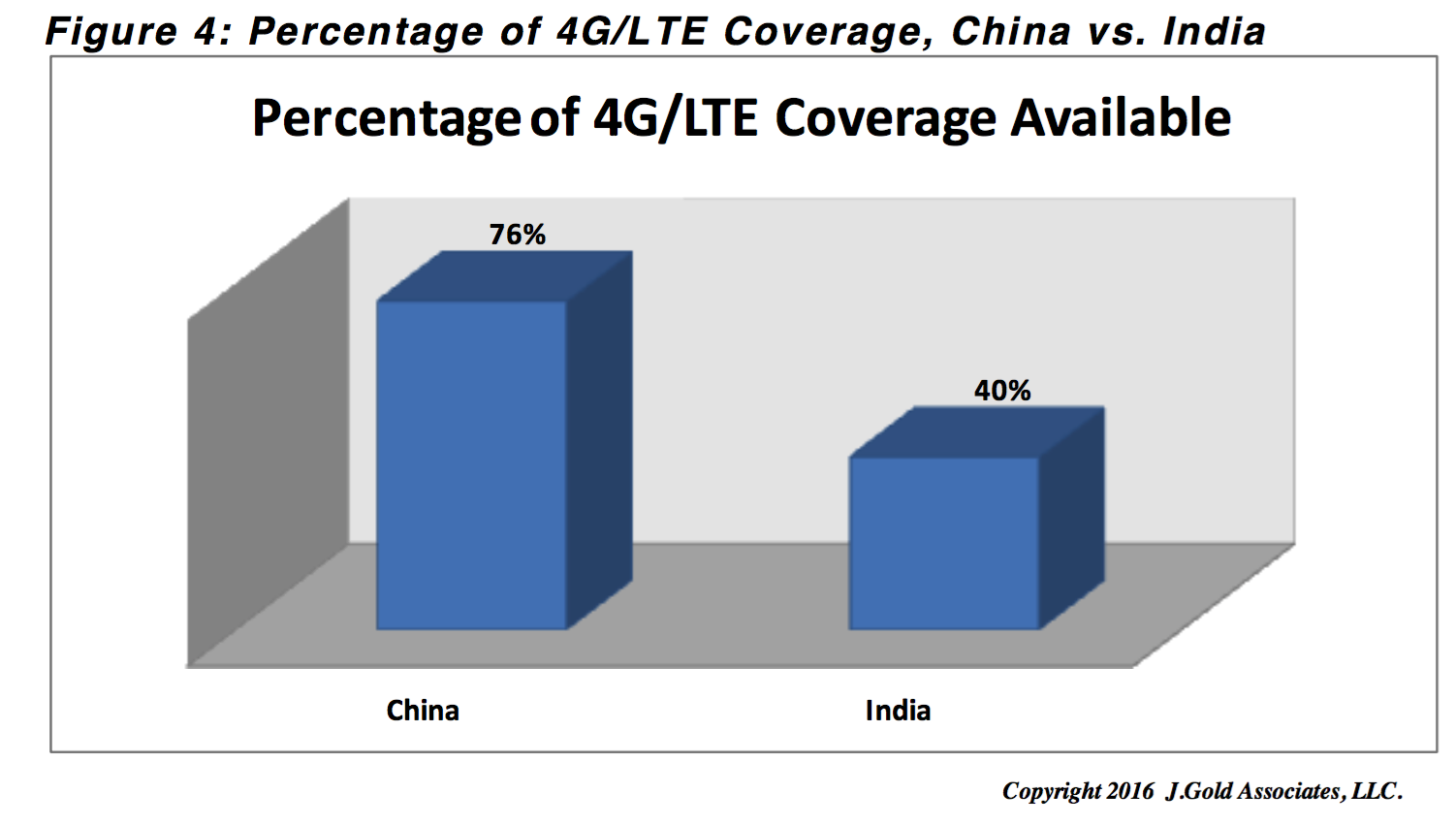
I’m a bit puzzled by this analysis.
1- Does median income matter, or is what matters the total number of customers with a high enough income to afford a luxury phone ? I don’t know India’s socio-economics, but if there’s a large underclass, a small middle class, and a relatively large upper class, averages/medians might be deceiving ? Comparing medians also assumes a) there’s no specific threshold at which premium phones come into play and b) India’s population distribution follows the same pattern as China’s ?
2- Are the coverage figures you cite for a) area, b) population, c) rich-enough (for mobile phones in general, or for luxury phones) population ? Also, is there, at all, a link between 4G coverage and luxury device sales ? More than for 3G ?
It does seem India’s luxury market is 10% of China’s ( http://www.statista.com/statistics/245645/leading-personal-luxury-goods-markets-by-country/, http://blogs.wsj.com/briefly/2015/08/28/5-charts-that-explain-indias-luxury-market/ 150b rupees is 2b euros), though growing faster (25% vs 7%)
Some tongue-in-cheek theorizing. But not really: Compare ratio of medal tally to number of participants or medal tally to population at the Rio Olympics. India is among the lowest. I view this as a societal indicator of how well the country productively mobilizes its resources. China started exhibiting a rise in its, shall we say, “olympic productivity” a few years before its economic boom became apparent. India has shown no indication yet that it will follow China’s trajectory. There are pockets or sectors of dynamism, yes, but overall, economy-wide transformation? My guess is the caste system still puts a big deadweight burden on how well India is able to develop and harness its human capital.
In China, the government can often or usually force growth of anything, anywhere it wants to. Not true in India…it’s a democracy.
Have you heard of Prime Minister Modi’s “Make In India”? Are you aware that the tariffs for imported smartphones in India are more than 10%? Are you aware that this has boosted Indian production of smartphones tremendously as even the Chinese manufacturers have built factories in India to work around the tariffs?
Governments can actually do quite a lot, even if they are democracies. In fact, the citizens tend to elect politicians who will help the economy grow.
https://en.wikipedia.org/wiki/Make_in_India
http://asia.nikkei.com/Politics-Economy/Economy/Make-in-India-propels-homegrown-smartphones
I appreciate the willingness to apply a data-based approach to understand the potential of India as an opportunity for Apple. I am however severely underwhelmed by the lack of rigour in building a data-backed argument.
You have made the assumption that a) the amount of total household income , and b) the amount of 4G cellular coverage available, will explain the propensity for people to purchase iPhones. However, you have made no effort to validate this assumption, or to understand what the case-effect relation (the shape of the curve) looks like. In a standard data-based study, one would first validate your two assumptions by plotting out the relationship of a/b and iPhone market share for a large number of countries. If you see a statistically significant relationship, then and only then can you validate your assumptions and use them as a basis for further reasoning (how India fits). You will also see what the curves look like.
Unfortunately in your argument, you have not validated that your assumption holds true in any way whatsoever.
Furthermore in the case of a) total household income, you have assumed that there is a direct proportional relationship with income and smartphone deployment (and hence it there is merit to comparing simple ratios). This is completely without basis, neither statistically nor logically. At the very least, from a logical perspective, one might assume that there might be a direct proportional relationship with discretionary income. However instead of using discretionary income, you are using total household income which is much less likely to show a direct proportional relationship.
At the very least, you should include about 10 more countries and see how your assumptions hold. My understanding of general data-backed discussions is that without this, your discussion is not worth taking seriously.
“Does it really represent the needed boost over the next couple of years that Apple thinks it will”
And here’s where you lost all credibility with me, because Tim Cook made it clear in recent a interview or investor call that Apple regards India as a long term project. Cook said more than once that “India today is where China was a decade ago,” (quote from memory, may not be exact) which clearly shows that they are not looking for growth there “in the next couple of years” but rather much longer term.
Apple’s numbers in India are not significant. It barely pulls into the top ten smartphone vendor list. Android based smartphones occupy almost 96% plus market share. Almost all apps and content today is written for Android platform in India not Apple.
There is a good solid Android device at every spec point /capability curve of Apple devices and at significant lower price point. Apple is recognized brand only in the top ten metro cities. Even there, it needs devices (good capable with large screens and dual sims) at price points between INR 20,000 ($ 300) to INR 30,000 ($ 430) to succeed.
All in all, in the next 3.5 years (until 2020) India will not be the market that Apple can look into to compensate for the decline in sales in China. The two markets that can fill in China’s void are 1. Southeast Asia and 2. Middle East.
You have noted very interesting details! ps decent web site.
Thank you for great content. I look forward to the continuation.
Definitely, what a great blog and instructive posts, I definitely will bookmark your site.All the Best!
I blog quite often and I seriously thank you for your information. The article has really peaked my interest.
I will take a note of your blog and keep checking for new details about
once per week. I subscribed to your Feed too.
リアルラブドール 大人の有名俳優がダッチワイフの異常な追悼式を行う